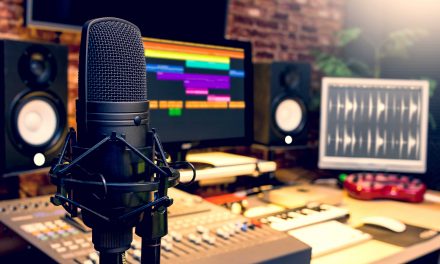Key Takeaways
- Radio sweepers are short, pre-recorded voice clips (usually 15–20 words) that identify your station and keep listeners engaged between songs, ads, and shows.
- They come in different styles — from dry sweepers (voice only) to produced, themed, and positioning sweepers with effects, slogans, and seasonal variations.
- Sweepers are often confused with other imaging elements like IDs, bumpers, stingers, liners, and music beds, but each serves a distinct purpose.
- Good sweepers act as your station’s audio logo, reinforcing brand identity, listener recall, and loyalty.
- To be effective, sweeper scripts should be short, clear, and on-brand, often ending with a call-to-action such as visiting a website or following on social media.
- Custom sweepers created by professional voice talents with music and sound design can elevate your station’s sound and give you a polished, professional edge.
There is so much jargon used in the radio industry for all the bits that go in-between the music, commercials and chat. It’s hard to comprehend what it all means. Even if you are in the industry yourself. What’s the difference between a radio bumper and a radio ID? Is a music bed something that plays soothing music until I fall asleep on it? In this article I’ll attempt to define exactly what a radio sweeper is for you.
Radio Sweeper Definition
A radio sweeper is a recorded statement by a voice over artist. Script often will contain the station ID and radio slogan. Good practice is to keep it to approx 15-20 words. Most common practice is to produce them with vocal and sound fx. Radio sweepers are also known as radio jingles and the term is used differently depending on where you are based. Short (up to 5 words) sweeper is also called a radio ID.
Example: “You’re listening to Radio XYZ – we play the best music – visit us at radioxyz dot com”
Why Do You Need Radio Sweepers?
When you’re playing a set of songs back to back you should aim to identify the name of your radio station in between each track. Radio sweepers are perfect for this purpose. They do the job quickly and allow you to get back to the music as fast as possible. Some clever radio automation software packages can even play radio sweepers that mix seamlessly from song to song right up to the vocals of the next track.
You need radio sweepers to remind your listener of what they’re listening to and can even give them a call to action. Think of what you want your listener to do.
Radio Sweeper Call to Actions
Here are some ideas of calls to action that could be included in your next radio sweeper:
- You could ask the listener to visit your website.
- Get the listener to follow your social media profiles.
- Ask the listener to call in to the radio station.
- Word of mouth – get the listener to tell a friend.
- Stay tuned – don’t switch off – something big is happening next!
Types of Radio Sweepers
Sweepers can be created in many different formats depending on the style of your station:
- Dry sweepers – just a voice, no music or sound effects. Great for simple station IDs or talk formats.
- Produced sweepers – voice combined with effects, stingers, or a music bed. These are the most common on commercial music stations.
- Themed sweepers – seasonal or event-based, such as Halloween sweepers with spooky SFX or Christmas sweepers with sleigh bells.
- Positioning sweepers – reinforce your brand’s promise, e.g. “The best mix of the 80s, 90s, and now.”
Sweepers vs. Other Elements
The jargon in radio imaging can be confusing, so here’s how sweepers differ from similar terms:
- Radio ID – the shortest form of sweeper, often just the name of the station.
- Bumper – a brief piece of audio that “bumps” into or out of a break (ads or news).
- Stinger – a very short sound effect or musical hit that punctuates the broadcast.
- Liner – a scripted phrase read by a voice talent, usually without heavy production.
- Music bed – instrumental track used under speech, not a sweeper itself.
Understanding these differences will help you order or produce exactly the right element for your station.
Creative Production Techniques
Radio sweepers are short, but they pack in a lot of creativity. Producers often use:
- Sound design layers – risers, hits, or transitions that match the station’s energy.
- Voice effects – subtle pitch shifts, distortion, or reverb to add punch.
- Ramping techniques – sweepers that time perfectly so the next song’s vocals start as the sweeper ends.
Popular software includes Adobe Audition, Audacity, and Pro Tools, while radio automation systems like Zetta or RadioDJ can schedule sweepers automatically to maintain flow.
Why Sweepers Are Branding Gold
Think of sweepers as your station’s audio logo. Just as brands use visual logos and taglines, sweepers reinforce your identity in the listener’s memory. A strong, consistent set of sweepers helps build recall and loyalty, even when people are passively listening in the background. Over time, these quick bursts of audio branding become just as recognizable as the songs you play.
Writing Effective Sweeper Scripts
We have a full script writing guide for you here.
- Keep it short – aim for 15–20 words, one message only.
- Match your format – fun and energetic for CHR, calm and smooth for Easy Listening, bold and authoritative for News/Talk.
- Be clear – avoid cluttering the message.
- Add a hook – a slogan, phrase, or call-to-action that listeners will remember.
Example scripts and free radio jingle downloads:
- “The hottest hits, back to back – This is Energy 105.”
- “Your community, your music, your station – Valley FM.”
- “More rock, more variety – 24/7 – Rockwave Radio.”
Take Your Radio Station To The Next Level – Custom Radio Sweepers
More script ideas for radio sweepers available here. For those looking to really level up their radio station sound, there is no better way than custom radio jingles. Simply select the voice, type in your script and order fully custom radio jingles and radio sweepers online. With 24h delivery available too!




